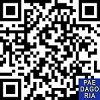AN ANALYSIS OF IMPERATIVE SENTENCES IN SUMBAWANESE
Abstract
Abstract: This research aimed to investigate the imperative sentences in Sumbawanese used by the participants in informal conversation based on the types, functions, and markers. As the sample, this research taken ten participants who were the native speakers of Sumbawanese. In conducting this research, the researcher used qualitative method. The data were taken through observation, video recorder, and field note. This research found that the types of imperative sentences in Sumbawanese are positive and negative imperative sentences. Positive imperative sentences divided into two such as positive imperative sentences with a noun as a direct address and positive imperative sentences without a noun as a direct address. While one is also divided into two, there are negative imperative sentences with a noun as a direct address and negative imperative sentence without a noun as a direct address. From all of the types of imperative sentences, the participants tend to use the positive imperative sentences with a noun as a direct address as their daily sentences in conversation. It also found that there are seven functions of imperative sentences in Sumbawanese such as imperative sentences as command, imperative sentences as request, imperative sentences as invitation, imperative sentences as suggestion, imperative sentences as advice, imperative sentences as prohibition, and imperative sentences as compulsion. However, the participants tend to use the imperative sentences as command in their conversation. The last, based on the seven markers all of imperative sentence, Sumbawa people all of them, but they dominantly used command markers of imperative sentences in their daily conversation.
Abstrak: Penelitian ini bertujuan untuk mengetahui kalimat-kalimat perintah dalam bahasa Sumbawa yang digunakan masyarakat dalam percakapan informal berdasarkan jenis, fungsi, dan penanda. Sebagai sample, penelitian ini melibatkan sepuluh partisipan penutur asli bahasa Sumbawa. Penelitian ini adalah penelitian kualitatif. Data penelitian diperoleh dengan cara observasi, video rekaman, dan catatan lapangan. Hasil penelitian ini bahwa bentuk kalimat imperatif dalam bahasa Sumbawa terdiri dari kalimat imperatif positif dan negatif. Kalimat imperatif positif dibagi menjadi dua yaitu kalimat imperatif menggunakan kata benda untuk panggilan langsung dan kalimat imperatif tidak menggunakan kata benda untuk panggilan secara langsung. Hal ini sama halnya dengan ungkapan kalimat imperatif negatif. Dari sekian bentuk kalimat imperatif, orang sumbawa cenderung menggunakan kalimat imperatif positif menggunakan kata benda dengan panggilan secara langsung ketika berkomunikasi sehari-hari. Ditemukan juga bahwa ada tujuh fungsi kalimat imperatif dalam bahasa Sumbawa yaitu kalimat imperatif untuk umum, meminta, mengundang, saran, nasehat, larangan, dan mewajibkan. Akan tetapi orang sumbawa cenderung menggunakan kalimat imperatif umum ketika berkomunikasi. Dari aspek penanda kalimat imperatif, orang Sumbawa menggunakan semua penanda tersebut, namun penanda perintah dalam kalimat imperatif adalah yang paling digunakan oleh masyarakat dalam percakapan sehari-hari.
Keywords
Full Text:
PDFReferences
Rosyid, A.A. (2015). Pengaruh Literasi Berbahasa Jawa Terhadap Perkembangan Bahasa, Sastra dan Budaya Jawa. Jurnal Wuny, 16(3), 1-10.
Agung Tribawa, I. G. N., Putra Yadnya, I. B., & Ida Setianingsih, K. A. (2018). Declarative and Interrogative Sentences in The Film “American Sniper.” Humanis, 950. https://doi.org/10.24843/jh.2018.v22.i04.p16
Ahn, J. (2014). The Research about Education Theory of Syntax of Classical Chinese Grammar in Korea. Journal of Chinese Characters Education in Korea, 42, 247–276.
Hardika. (2014). An Analysis of Imperative Sentences of Iron Man 3 Movie and Their Subtitling. Thesis, University of Surakarta.
Jary, M., & Kissine, M. (2019). Mood and the Analysis of Imperative Sentences. Relevance, Pragmatics and Interpretation, 9(1), 115–126.
https://doi.org/10.1017/9781108290593.011
Kasadana. (2017). Makna Budaya Dalam Ungkapan Bahasa Sumbawa Besar: Sebuah Kajian Etnolinguistik. Thesis, Universitas Mataram.
Kurniawati. (2013). A Contrastive Ananlysis of Imperative Sentences Between English and Javanese Language. Thesis, STAIN Salatiga.
Mbete, A. M. (2010). Strategi Pemertahanan Bahasa-Bahasa Nusantara. Seminar Nasional Pemertahanan Bahasa Nuasantara, 1–11.
Nirmala, R., Singh, C. K., & Rani, P. (2014). Relationship of Language Development With Personal and Socio – Economic Variables of Preschoolers. Periodic Research, 3(1), 227–233.
Septiningsih, L. (2010). Pemertahanan Bahasa Daerah: Studi Kasus Bahasa Jawa Dalam Karya Sastra Indonesia. Seminar Nasional Pemertahanan Bahasa Nusantara, 84–89.
Syafruddin. (2010). Students’ Difficulties in Speaking Ability at the Eight Grade of SMPN 1 Lenangguar. Thesis, Universitas Hamzanwadi Selong.
DOI: https://doi.org/10.31764/paedagoria.v10i2.1007
Refbacks
- There are currently no refbacks.
Copyright (c) 2019 Paedagoria: Jurnal Kajian, Penelitian dan Pengembangan Kependidikan

This work is licensed under a Creative Commons Attribution-ShareAlike 4.0 International License.
Paedagoria : Jurnal Kajian, Penelitian dan Pengembangan Kependidikan
Fakultas Keguruan & Ilmu Pendidikan | Universitas Muhammadiyah Mataram.
_______________________________________________
 | Paedagoria : Jurnal Kajian, Penelitian dan Pengembangan Kependidikan |
______________________________________________
CURRENT INDEXING:
EDITORIAL OFFICE:


















